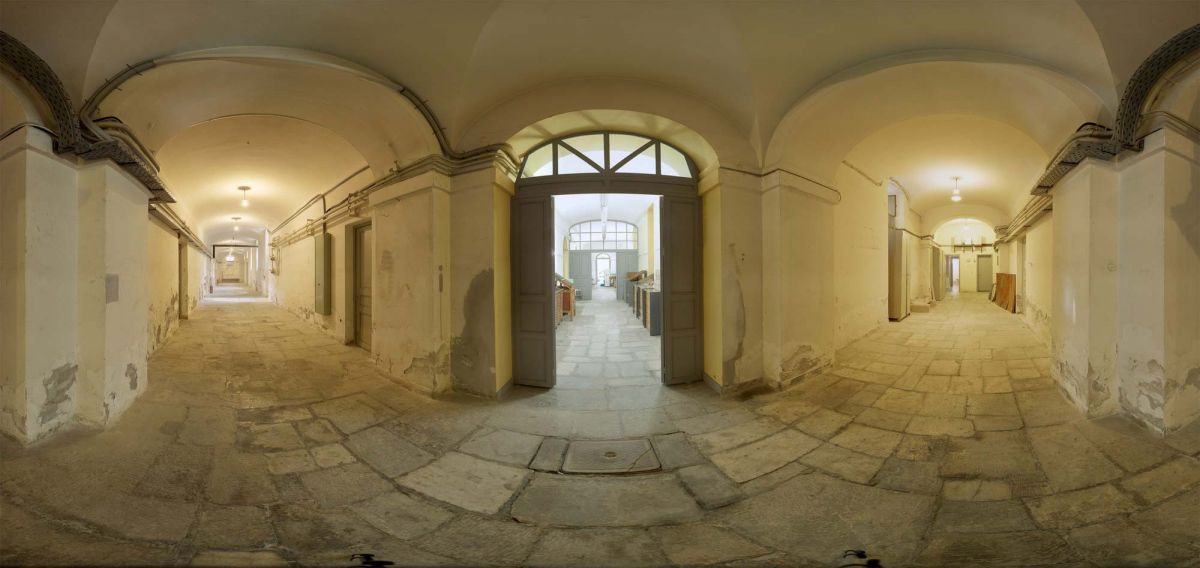SOFIA TZIMA / H Αξία, Saturday, April 4th, 2009
Athens Art Gallery hosts a photographic exhibition by Chris Simatos, from April 2nd to May 2nd.
Sofia Tzima, art historian, reports on Chris Simatos’ work:
In Chris Simatos’ first personal exhibition, held from April 2nd to May 2nd at the Athens Art Gallery, we have the opportunity to see a new approach to the theme of ruins. The way the artist photographed the abandoned “Xenia Hotel” on Mount Parnes, is astounding. Having as his main theme the internal corridor of a building, the artist has created a kind of panorama, a curved space, using the specific technique of digital imaging he devised. Each image, thanks to its high definition, helps the viewer to notice details such as debris, dust, paint specks, while their big size (1.9m high by 4m long) creates the illusion that the gallery wall is a passage to the “Xenia Hotel”. The most important element though is that the image itself has a fragmented form, it is printed on tiles that gradually “open up” and are incorporated into the real space …
Heterotopy
In essence, the work functions as an installation that studies the concept of heterotopy, proposed by the philosopher Michel Foucault. On the one hand, its main theme is a space out of the ordinary, as the Xenia was at first a sanatorium, then a hotel and finally a ruin. On the other hand, it is a transitory place, lying between the real and the imaginary. According to the artist, the relation between the familiar and the unfamiliar, the living and the dead, constitutes the core of his work: “Using the panoramic images of the ‘Xenia’ as a construction material (whenever they cover the walls of a real room) space is transformed to an alien, unfamiliar one (…) The purpose of these installations is for the viewer to face a space until then unknown to him. In short, to experience the death of the specific place in such a way, that this event urges him to recognize the value his familiar space has for himself”.
Ruins
Ruins as a theme first appeared in painting and poetry at the age of Renaissance. First, their metaphorical significance was realized (for example, they can serve as metaphors of the moral decadence of man or the temporariness of his works). Then, during the 16th century, followed the discovery of their aesthetic value –ever since, the allure of wear and attrition has become a cliché– until they were recognized as one of the main symbols of the aesthetics of romanticism. Their fragmentary, open character, their ability to act as conveyors, the sense of the unfamiliar they provoke, are elements fitting modern art, which in turn makes use of them.
The difference today is that we do not only perceive the ancient buildings or the once magnificent monuments as ruins, but an industrial space as well, an abandoned hotel, a useless machine. In any case, of particular importance is the fact that the ruins transform the study of a place into a contemplation about time. According to Chris Simatos’ professor at the Athens School of Fine Arts, Marios Spiliopoulos, “the photographic imaging of ruined buildings is, in general, a kind of imaging of the history of their human past inhabitants, who are thus projected, along with the traces they left behind, into the present and the future”. To this well-defined theme, Chris Simatos contributes something new, commenting, at the same time, on the possibilities of the means itself, that is photography.


